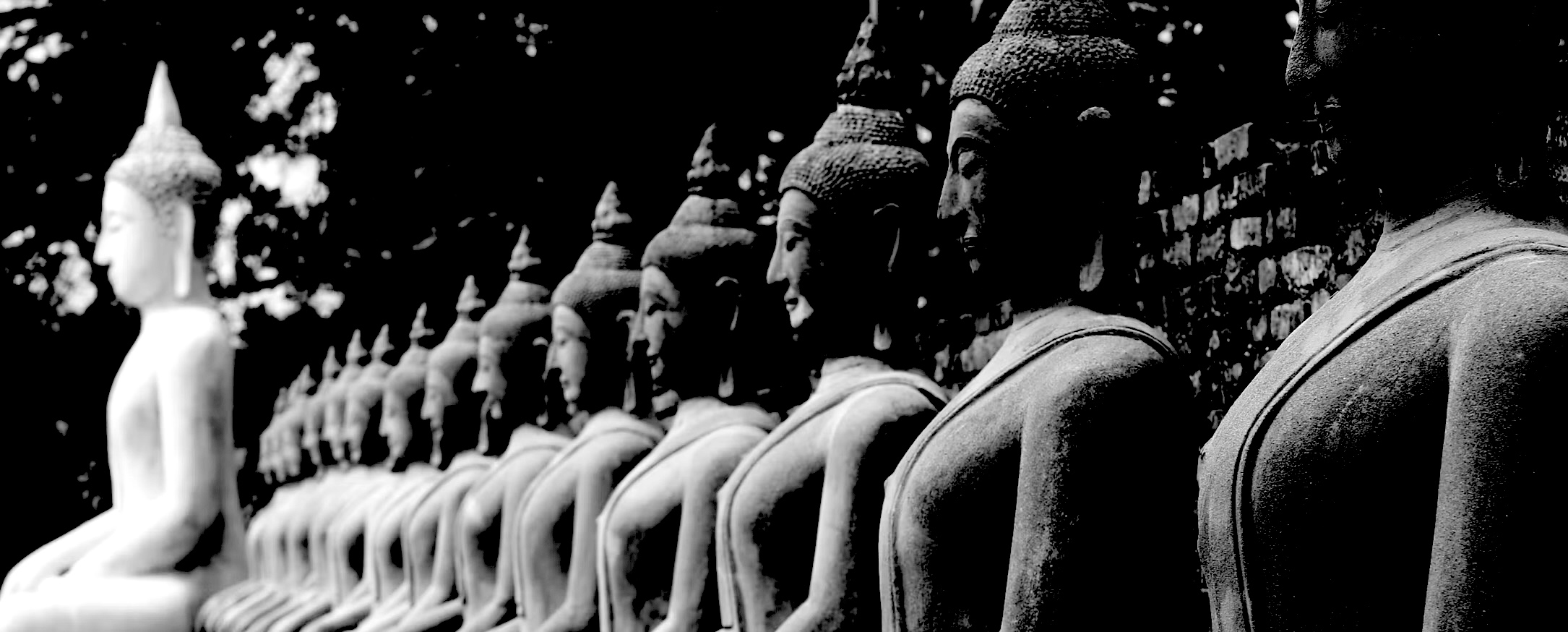I have had the good fortune to meet charismatic Buddhist teachers in my own lifetime, notably His Holiness the Dalai Lama, Kalu Rinpoche the Elder, and Tripitaka Master Hsuan Hua Shih. Each of them had a profound influence on my practice and life.
Perhaps you have met charismatic Buddhist teachers, too. However, Buddhadharma does not thrive on charisma alone. Those teachers who achieve such mythic status are too rare.
Looking at Buddhist organizations in the present, some have ordained leaders, some have extensively trained lay leaders, but mostly, they are managed by dedicated upasakas and upasikas (dedicated lay practitioners) doing the heavy lifting. Welcome to post-charismatic Buddhism!
When Dogen Zenji was asked late in his life to sum up his achievements, his reply was essentially, “Oy vey, one mistake after another.” My guess is that he was talking about the challenges of growing Zen Buddhist institutions in thirteenth-century Japan.
Herein lies the challenge of impermanence: For Buddhist organizations to thrive after the deaths of their illustrious founders, there must be a solid organizational foundation for continuation. After Shakyamuni’s passing came the Councils of Elders, often fractious affairs comprising widely divergent perspectives amongst participants. In the present day, one does not have to look too far to see the turmoil gripping lineages whose founders have passed on. Similarly, one can easily imagine the uncertainty surrounding speculation around what will happen after the next generation of Elders is gone.
This is why sangha is one of the Three Jewels. This is why Buddhist centers have evolved boards of directors, codes of ethics, succession plans, and the like. It’s not glamorous work, but it is essential.
Tsong Khapa was a great dharma teacher, but part of his genius as leader of the Gelugpa sect was to absorb other smaller sects that were struggling and to build a robust political structure that every Tibetan could feel embraced them. He may have been at the center of the mandala or the head of the refuge tree, but he built a system accommodating thousands of other individuals – a system in which each could contribute in unique ways.
Similarly, when Dogen Zenji was asked late in his life to sum up his achievements, his reply was essentially, “Oy vey, one mistake after another.” My guess is that he was talking about the challenges of growing Zen Buddhist institutions in thirteenth-century Japan.
The Monastery Rules by Berthe Jansen, available as a free e-book from the University of California Press, provides an extremely detailed investigation of monastic organization and functioning in pre-invasion Tibet. The Practice of Chinese Buddhism 1900-1950 by Holmes Welch, available as a free e-book from Terebess and other sources, provides a similarly detailed investigation from pre-communist China. Both resources are well worth reading. The reason they are important is that they reveal the nuts and bolts of how to run a Buddhist institution, including how to deal with the inevitable challenges of human resources, economics, the surrounding community, transgressions, shifting political winds, and more. In other words, they offer a perspective unembellished with romantic neo-Orientalist fantasies about the folks in charge.
There is a lot of myth-making around Buddhist teachers, past and present. We humans have a devotional urge. Celebrity culture doesn’t help, because it channels our energy in a way that reciprocally devalues anyone who isn’t conforming to mainstream celebrity expectations. In reality, however, Buddhist teachers are forged, not born.
For those who feel called to become Buddhist teachers, be forewarned: the journey is many years long. First comes service leadership. In fact, service leadership may be considered to be just as important a “career” goal as a Buddhist teacher. Taking the dharma seat is much more often an avocation rather than a vocation.
Here’s an interesting idea: professional development for sangha leaders. You can read many books about the dharma. About organizational development in Buddhist communities, not so much. Traditional Buddhist teacher training does not really include a lot of pastoral skill development, even though there is a lot of ink spilled about wisdom and compassion. It’s deeply problematic that such an integral part of caring for your Buddhist community should be missing.
Buddhist spiritual care is a growing field, although Buddhist chaplains are statistically a tiny minority in this overwhelmingly Christian and Jewish profession. These are Buddhist teachers of a different sort. They are mostly embedded in healthcare but also serve in education and the military. They serve the general public. In addition to a grounding in Buddhist frames of reference for spiritual care, they also receive extensive training in how to serve in the complex secular organizations where they are employed or volunteer.
You might imagine that the role of Buddhist chaplains is ministering to the care-seekers who are patients or students in those organizations, but that is only one aspect of their work. Another is supporting their colleagues, offering trauma-informed help with burnout, moral injury, or challenging relationships with fellow workers and the hierarchical structures above and below them. As such, their training comprises much more than just Buddhist doctrine or meditation techniques.
Yet another skill that chaplains must learn, which would be extremely valuable for all Buddhist community leaders, is self-care. This isn’t just about work-life balance, eating right, or maintaining a personal practice. To put it in the context of the Four Brahmaviharas, self-care is included in loving-kindness (metta), compassion (karuna), sympathetic joy (mudita), and especially equanimity (upekkha). In a sense, the development of the Four Brahmaviharas is actually the antidote to craving for charisma, status, or followers.
Another aspect in the development of Buddhist community leaders should be inter-denominational solidarity, but that too is not nearly as robust as I, for one, would like it to be. All too often, Buddhist teachers and community leaders exist cloistered in lineage silos that emphasize their particular practices and perspectives instead of building wider relationships that could nurture them across traditional boundaries. All too often, I see Buddhist teachers working on enhancing their charisma at the expense of humble service. It is as if they are more focused on themselves than on what their devotees really need, just as we see happening in the secular world at large.
If our intention for the Buddhists who come after us is to provide a solidly constructed dharma seat, it will have to be built on a foundation that includes not just inspiring storytelling and events by charismatic leaders, but also effective sangha leaders who are trained in relationship skills, building strong Boards of Directors, flat organizational models, financial resiliency, engagement organizing, JDEI, project management, and such. The voices of those individuals and groups who are already championing these skills need to be heard in our broader conversation. Then we will have not just a dharma seat but also a victory banner to hang over it.

